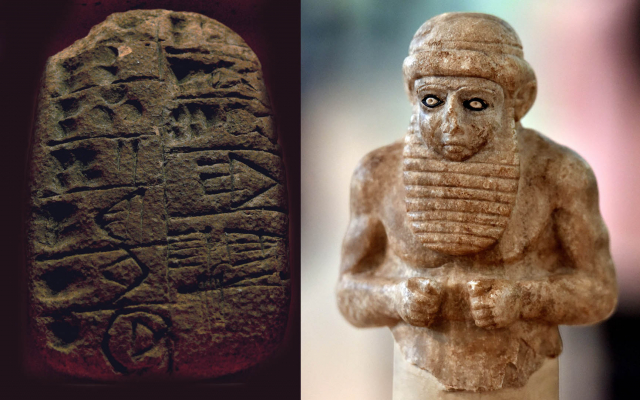An Introduction to Early Mesopotamia (4000-2700 BC)

The Dawn of History
Mesopotamia means 'Between the Rivers'. The oldest known occurrence of the name Mesopotamia dates to the 4th century BC, when it was used to designate the area between the Euphrates and the Tigris rivers. Later, the historical region included not only the area of present-day Iraq, but also parts of present-day Iran, Syria and Turkey.
In this podcast Professor Jacob Dahl of Wolfson College, University of Oxford, discusses the evolution of what is considered one of the ‘cradles of civilisation’, from the development of cuneiform, the creation of the first city states, the technological and engineering innovations of the Uruk period, their religious practices and mathematical discoveries, through to the explosion of literature and the fascinating archaeological contradictions of the First Dynasty of Ur.
This period represents the time before ‘the flood’ and was foundational for many subsequent cultures that would develop in ancient Mesopotamia (the Akkadian Empire, Babylon). It was the age of heroes, of Gilgamesh, and the time when the written word finds its earliest development, where the wheel is first used, and the division of time into units of 60 is established.
Early Mesopotamia has a special and unique place within the origin story of many of our ideas and stories and its varied sources provide an opportunity to engage with humanity at the beginning of recorded history.
1. What are the main sources and challenges for historians engaging with early Mesopotamian history?
2. Why was Mesopotamia one of the cradles of civilisation?
3. Why does this happen in Mesopotamia?
4. How long does it take for urbanisation to develop?
5. When do we start to see the development of writing in Mesopotamia?
6. What impact does that innovation have?
7. What is and is not “Sumer”?
8. When do we start seeing the emergence of the first city-states?
9. What is the Uruk period? To what extent does this period represent a turning point in world history?
10. What technological and economic innovations took place during this period?
11. What do we know about the early religious ideas and practices of the Uruk period?
12. How does Mesopotamian religion and practice develop over time?
13. What mathematical and astronomical discoveries were made by the ancient Mesopotamians?
14. What does the architecture tell us about their society and politics?
15. What kind of art do we have?
16. How connected was the early Mesopotamian civilisation with the rest of the world?
17. Can you tell us about the early Dynastic period and the First Dynasty of Ur? Archaeological contradictions.
18. Religious change: Gods changing from female to male.
19. What is the legacy of early Mesopotamian civilisation?
In order to access the full content of the podcasts please Login or Join the HA.

